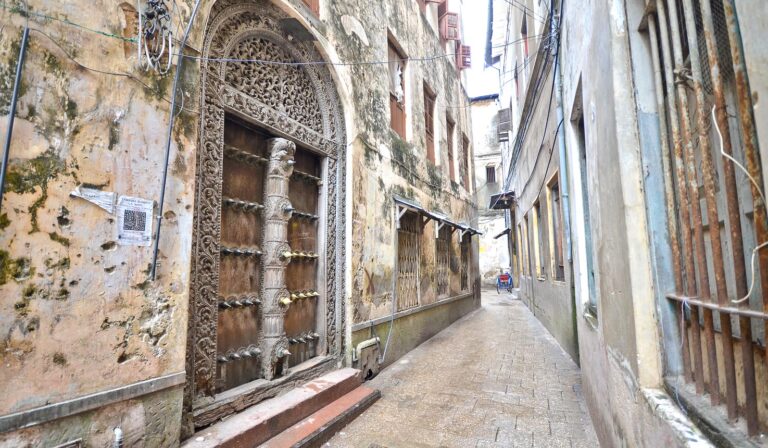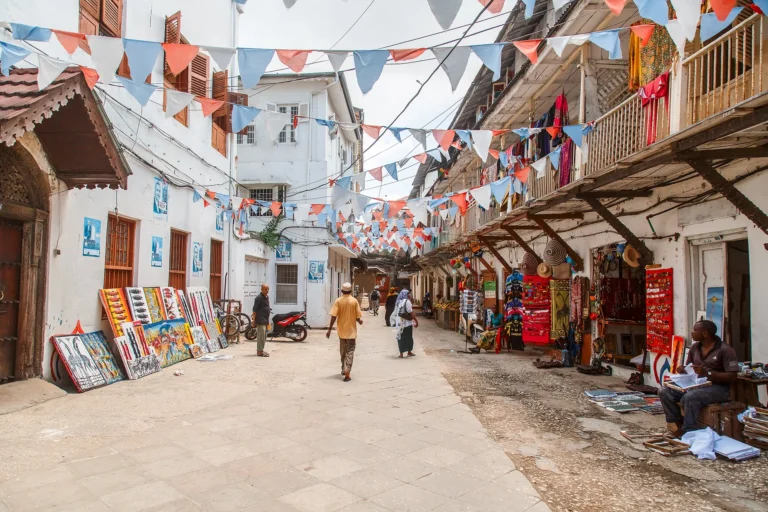Explore Stone Town
Best Tanzania Safari Destinations | Tanzania’s top safari parks and game reserves
Overview
Stone Town, the cultural and historical core of Zanzibar City, is a UNESCO World Heritage Site brimming with centuries-old architecture, winding alleys, vibrant markets, and a rich blend of African, Arab, Indian, and European influences. This charming coastal town offers travelers a deep dive into the island’s history, culture, and traditions, making it a must-visit destination for those exploring Zanzibar.
What to Expect on an Explore Stone Town Tour
1. Historical Landmarks & Architectural Wonders
House of Wonders (Beit-al-Ajaib) – Once the grandest building in East Africa, this palace was built in the late 19th century by Sultan Barghash. Although currently under restoration, it remains a symbol of Zanzibar’s rich history.
Old Fort (Ngome Kongwe) – A 17th-century fortress built by the Omanis to defend against Portuguese invaders. Today, it houses a cultural center, shops, and an open-air amphitheater.
Sultan’s Palace Museum (People’s Palace) – Once the royal residence of the Omani sultans, now a museum showcasing the life of Zanzibar’s former rulers.
Forodhani Gardens – A vibrant waterfront park famous for its night market, where visitors can enjoy local delicacies like Zanzibari pizza, seafood skewers, and sugarcane juice.
Freddie Mercury House – The birthplace of Queen’s legendary lead singer, Freddie Mercury, now a popular stop for music enthusiasts.
2. The Slave Trade & Cultural Insights
Anglican Cathedral & Former Slave Market – A poignant reminder of Zanzibar’s dark past in the slave trade. The cathedral was built on the site of the former slave market, with underground chambers still visible.
Hamamni Persian Baths – Built in the late 1800s by Sultan Barghash, these historic baths reflect the Persian influence on Zanzibar’s architecture.
3. The Labyrinth of Stone Town’s Alleys
Walk through narrow, winding alleys lined with intricately carved wooden doors, bustling markets, and hidden courtyards. These alleys reveal a mix of cultures, from Arab-style homes with wooden balconies to Indian-influenced buildings with latticework windows.
4. Local Markets & Shopping
Darajani Market – The largest market in Stone Town, where visitors can explore stalls selling spices, tropical fruits, fresh seafood, and vibrant textiles.
Memories of Zanzibar & Local Craft Shops – A great place to shop for souvenirs, including handwoven baskets, Maasai beadwork, Zanzibar chests, and traditional Tinga Tinga paintings.
5. Food & Culinary Delights
Enjoy traditional Swahili dishes such as biryani, urojo (Zanzibar mix), coconut curries, and seafood platters at local restaurants.
Try the famous Zanzibar coffee at a local café, infused with spices like cardamom and cloves.
Visit the Forodhani Night Market for an unforgettable street food experience.
Best Time to Visit
The best time to explore Stone Town is during the dry season (June to October and December to February) when the weather is warm and ideal for walking tours. Early mornings or late afternoons are recommended to avoid the midday heat.
How to Get Around
Walking – The best way to explore Stone Town is on foot, as most attractions are within walking distance.
Bicycles & Tuk-Tuks – Available for short trips within the town.
Guided Tours – Hiring a local guide enhances the experience by providing historical insights and hidden gems.
Why Visit Stone Town?
A unique mix of cultures and influences
Rich historical and architectural heritage
Vibrant local markets and street food scene
Insight into Zanzibar’s past, including the spice trade and slave history
Exploring Stone Town is like stepping into a living museum, where history, culture, and modern life intertwine in the most captivating way. Whether you’re a history buff, foodie, or curious traveler, Stone Town promises an unforgettable experience.









